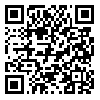
International Journal of Industrial Engineering & Production Management
Iran University of Science and Technology
Sat, Jul 19, 2025
[Archive]
Volume 24, Issue 2 (IJIEPM 2013)
2013, 24(2): 171-182 |
Back to browse issues page
Download citation:
BibTeX | RIS | EndNote | Medlars | ProCite | Reference Manager | RefWorks
Send citation to:



BibTeX | RIS | EndNote | Medlars | ProCite | Reference Manager | RefWorks
Send citation to:
Sepehri M M, Maleki M, Majlesi Nasab N. Designing a Redeployment Model for Located Ambulances. Journal title 2013; 24 (2) :171-182
URL: http://ijiepm.iust.ac.ir/article-1-576-en.html
URL: http://ijiepm.iust.ac.ir/article-1-576-en.html
, mehdi.sepehri@gmail.com
Abstract: (8512 Views)
Nowadays in all countries, public resources of health care may be inadequate to meet health care demands. Hence, the policy makers and providers of health care should provide citizens with most effective methods when available resources are limited. During the past decades, a large number of research efforts in the issue of health care and its applicable mathematical models have been considered by researchers and practitioners. In this regard, location and redeployment of ambulances is one of the main issues considered in which an attempt is made to maximally cover desired regions and service patients in emergency situations. This paper presents the issue of locating available ambulances with regards to demand pattern and redeploying the located ambulances. Toward this end, after locating the ambulances, a new mathematical model is developed with the aim of minimizing the expected value of total traveled distance by the ambulances. In addition, to shed light on the merit of proposed model, a set of numerical experiments is presented. By the end of the paper, the corresponding conclusions are presented.
Type of Study: Research |
Subject:
Other related Industrial and production reserach subjects in which has direct relation to the state-of-the art of the IE
Received: 2011/05/27 | Accepted: 2013/09/28 | Published: 2013/09/28
Received: 2011/05/27 | Accepted: 2013/09/28 | Published: 2013/09/28
Send email to the article author
| Rights and permissions | |
 | This work is licensed under a Creative Commons Attribution-NonCommercial 4.0 International License. |




